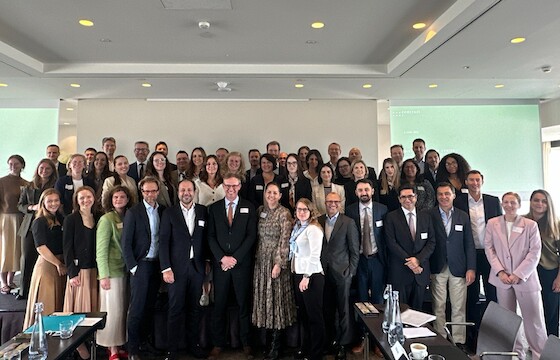What?
Dual distribution occurs where a supplier sells goods or services both directly and through independent distributors, thereby competing with these independent distributors on the downstream market. A classic example would be that of a manufacturer of a clothing brand who sells these clothes in his own stores but also relies upon independent retailers to sell the clothes in their stores.
Dual distribution is hardly a new phenomenon. Already in 2010, it was applied by manufacturers for various reasons. To set an example for their independent distributors in so-called "flagship stores", to offer more choice to the end-customers, etc. Over the past decade, however, dual distribution has become increasingly important due to the significant increase in online sales.
The increased use of dual distribution has led the European Commission to examine whether the existing legal framework is still adapted to the changed market conditions, but it has also prompted stakeholders to point out certain shortcomings of the legal framework. This countdown discusses information exchanges in the context of dual distribution.
Now?
The exchange of information between supplier and buyer is indispensable for the proper implementation of a vertical agreement and such exchange is covered by the VBER if the vertical agreement itself benefits from the safe harbour of the VBER.
Pursuant to Article 2(4), first sentence, VBER, vertical agreements between competitors do not benefit from the safe harbour. Only certain cases of dual distribution do. That is to say, pursuant to Article 2(4), second sentence, non-reciprocal vertical agreements benefit from the block exemption if the supplier is a manufacturer and a distributor of goods, or a provider of services at several levels of trade, whereas the buyer is a distributor, not a manufacturer, or provides its goods and services at the retail level and is not a competitor at the trade level where it purchases the contract services.
Currently the exchange of information in the context of the cases of dual distribution that benefit from the block exemption brings with it quite some legal uncertainty as it is not addressed in the VBER and the Vertical Guidelines. To the extent that it is part of the vertical agreement, it can be within the safe harbour. To the extent that it pertains to the downstream (competitive) level, the VBER does not apply but instead the stricter guidelines on the exchange of information between competitors, which can be found in the Horizontal Guidelines.
The future as of 1 June 2022?
The draft new VBER states that the exchange of information in dual distribution shall not be exempt if the parties have an aggregate market share that exceeds 10 % in the relevant market at retail level. In this case, the exchange of information is assessed under the Horizontal Guidelines (Article 2(5) draft VBER).
This proposal was not supported by stakeholders. Subsequently the European Commission published a draft new section for the Vertical Guidelines (also available on the DLC website) dealing with information exchange in dual distribution. This draft section is no longer market share based but states that the block exemption applying to dual distribution shall apply to all aspects of the vertical agreement, including any exchange of information between the parties that is necessary to improve the production or distribution of the contract goods or services by the parties.
Concretely the draft section lists several examples of such exchanges, including the following:
- Technical information relating to the contract goods or services;
- Information relating to the supply of the contract goods or services, including information relating to production, inventory, stocks, sales volumes and returns;
- Aggregated information relating to customer purchases of the contract goods or services, customer preferences and customer feedback;
- Information relating to the prices at which the contract goods or services are sold by the supplier to the buyer;
- Information relating to the supplier’s recommended resale prices or maximum resale prices for the contract goods or services and, conditionally, information relating to the prices at which the buyer resells the goods or services;
- Information relating to the marketing of the contract goods or services, including information on new goods or services to be purchased and sold under the vertical agreement, as well as, conditionally, to information on promotional campaigns for the contract goods or services;
- Performance-related information, including aggregated information communicated by the supplier to the buyer relating to the marketing and sales activities of other buyers, as well as information relating to the volume or value of the buyer’s sales relative to the buyer’s sales of competing goods or services.
Conversely, the following information generally shall not fall under the exemption:
- Information relating to the actual future prices at which the supplier or buyer will sell the contract goods or services downstream, unless the exchange is necessary, e.g. to organize a coordinated short-term low price campaign;
- Customer-specific sales data, including non-aggregated information on the value and volume of sales per customer, or information that identifies particular customers, unless the exchange is necessary, e.g. to provide guarantee or after-sales services;
- The exchange of information relating to goods sold by a buyer under its own brand name with a manufacturer of competing branded goods, unless the manufacturer is also the producer of the own-brand goods.
In practice?
If the draft VBER applies to the dual distribution scenario and the type of information is listed in the Vertical Guidelines or otherwise necessary to improve the production or distribution of the contract goods or services, the exchange of the information falls under the VBER.
Information exchanges in the context of dual distribution that do not benefit from the exemption must be assessed individually under Article 101 TFEU, taking into account the Horizontal Guidelines. The other provisions of the vertical agreement may nonetheless benefit from the exemption.
The parties to an exchange of information that does not benefit from the exemption may take precautions to minimize the risk that their information exchange will raise horizontal concerns. For example, they may exchange only aggregated sales information or ensure an appropriate delay between the generation of the information and the exchange. Another possible precaution is to use technical or administrative measures, such as information barrier protocols or firewalls, to ensure that buyer information is accessible only to the personnel responsible for the supplier’s upstream activities and not to the personnel responsible for the supplier’s downstream direct sales activity, where the supplier competes with the buyer.
Assessment?
The adjustment of the topic of exchanges of information in dual distribution is to be welcomed. Although the Distribution Law Center understands that the European Commission has a concern that a dual distribution scenario may lead to “false positives” (i.e. information exchanges that raise significant horizontal concerns, but are nevertheless block exempted), the introduction of an additional market share limit is not an appropriate way to address such concern.
The new test, where the draft VBER would cover exchanges of information necessary to dual distribution, is an improvement, also because examples are given in the draft revised Vertical Guidelines.
Unfortunate is that the European Commission did not publish its proposed wording for the new Article 2(5) draft VBER. It is also to be noted that the draft Vertical Guidelines only contain examples of exchanges of information that may or may not be necessary to dual distribution, but that they do not otherwise contain additional guidance on this condition.
Finally, the broad definition of ‘suppliers of online intermediation services’ may have the unwanted consequence that the distribution agreements between a supplier that opens up its platform to its buyers at the request of the latter (for example because some of them do not have the resources to start their own web shop) will no longer be covered by the block exemption.
Want to know more? Stay tuned...
Counting down towards 1 June 2022 we aim to provide you with regular updates and the necessary legal knowhow in order to fully prepare your business for the future. Please also check out the Distribution Law Center platform and our LinkedIn page for much more information on the laws governing vertical agreements, covering both competition and commercial law. 27 specialized teams from all over the EEA are working hard to turn the platform into your favourite source of guidance and information.
A translation of this Countdown newsletter is available in the following languages: Czech, Portuguese, Romanian, Slovak, Spanish, Swedish.
Read the available DLC Countdown newsletters on the changes to be expected here.





Sign in to post comments